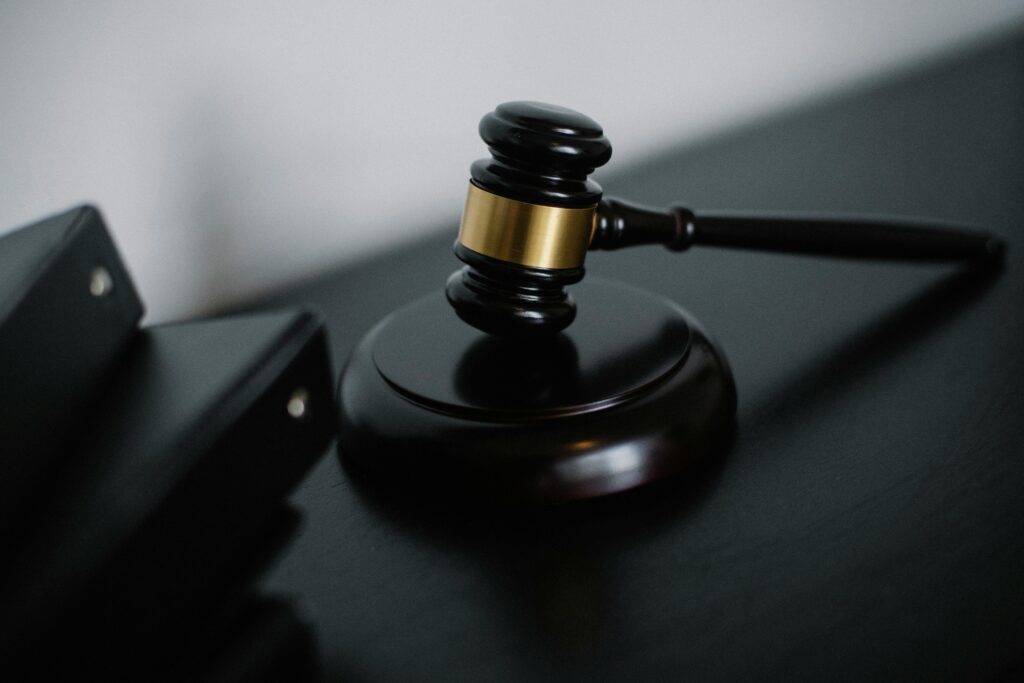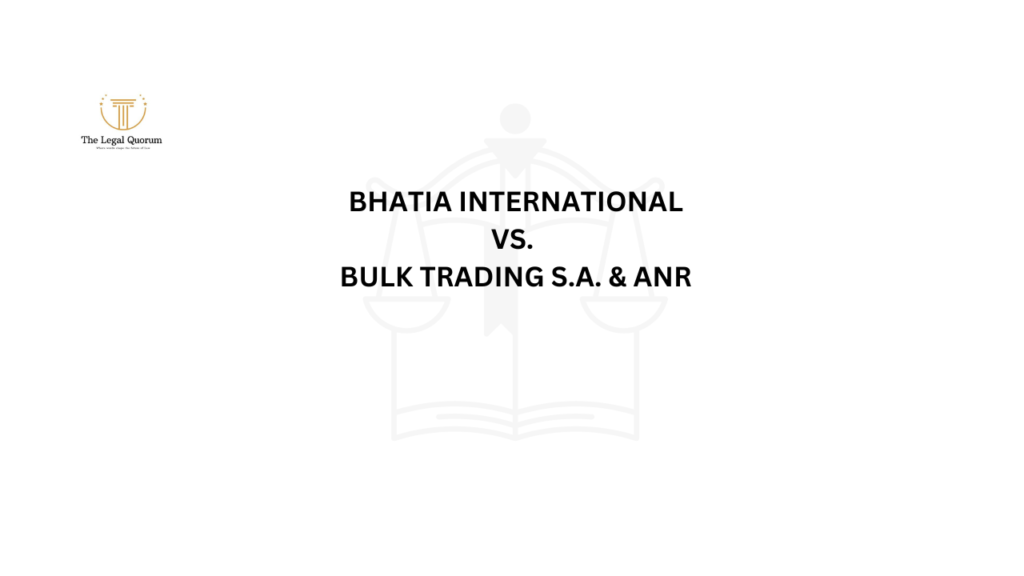Published On: October 11th 2025
Authored By: Amrita Gang Deb
L.R. Law College, Sambalpur University
ABSTRACT
The concepts of judicial review and separation of powers form the bedrock of constitutional governance in democratic systems. Judicial review empowers the judiciary to examine the constitutionality of legislative and executive actions, thereby acting as a safeguard against arbitrary use of power. Separation of powers, on the other hand, ensures a functional distribution of authority among the legislature, executive, and judiciary, preventing the concentration of power in any single organ. The relationship between these two doctrines lies in their shared goal of limiting power and promoting accountability. Together, these principles maintain the system of checks and balances, promote accountability, and secure the rule of law.
INTRODUCTION
A well functioning constitutional democracy is only founded when the powers are not concentrated in one but separated through branches of government. For this view, the concept of doctrine of separation of powers and judicial review came into effect and are the essential constitutional mechanisms that ensure rule of law, accountability, institutional balance and a fair regulation of rules and regulations in a country. The doctrine of separation of powers deals with the distribution of powers into legislature, executives and judiciary while judicial review empowers the judiciary to invalidate the laws and executive actions that contravene the constitution. Basically,it checks against the legislature or the executives.
Both the doctrines are interlinked to each other but the concept of judicial review lies in the supremacy of the constitution of the land. Its purview is to check actions which are inconsistent with the constitution. Article 13 of the Indian Constitution speaks about the laws that should be made under the norms laid down in the constitution of India. Article 32 and 226 of the Indian Constitution deals with the fundamental rights which guarantee to protect one’s fundamental right from being violated. Hence, Judicial review checks upon the actions done by the legislature, executive.
JUDICIAL REVIEW
Judicial review is defined as a court’s power to review the actions of other branches of government, especially the court’s power to invalidate legislative and executive actions as being unconstitutional. It is the power of the courts to check the constitutionality of any legislature and executive or union and the state government. It is the extension of the court’s inherent power to determine whether an action is lawful or not and to grant appropriate relief.
DOCTRINE OF SEPARATION OF POWERS
The concept of separation of powers is firmly established in the Indian Constitution as one of its fundamental principles. The constitution of India is the source of all authority in the country. The sovereign authority has been divided into three wings : the executive, legislature and judicial.
It includes the following elements :-
1) A reasonable individual should not be allowed to influence more than one of thethree organs of the government.
2) It is not appropriate for one organ of the government to interfere with theoperations of other organs of the government.
3) No other organ of the government should be allowed to perform the functions that have been delegated to another organ of the constitution.
EVOLUTION OF JUDICIAL REVIEW
The concept of judicial review finds its roots in English law as well as in American law.
1) British common law — As judges in England started to carefully examine whether activities of the government and the decisions were lawful and conformed to recognised legal principles and statutes and thus the concept of judicial review developed.
2) American constitutionalism — The constitution of the United States was passed in 1787. Chief Justice John Marshall of the Supreme Court established the court’s jurisdiction to interpret the constitution and declare legislature and executive actions illegal if it violated its provisions in the historic case of Marbury Vs. Madison (1803) , which established the concept of judicial review in the United States.
JUDICIAL REVIEW IN INDIAN CONSTITUTION
In post Independence India, the inclusion of specific provisions relating to judicial review was necessary as it impacted the individuals and cluster rights warranted within the text of the constitution.
Article 13(2) — Article 13(2) of the Indian Constitution prescribes that the union or the states shall not build any law that takes away or abridges any of the elemental rights and law created in dispute of the aforesaid mandate shall, to the extent of the dispute , be void.
Article 226 — Article 226 of the Indian Constitution confers a power on all the High Court of India which they did not enjoy before the commencement of the constitution. It enables them to issue any person or authority, including in appropriate cases any government,orders or writs for the enforcement of any of the rights conferred by part lll and ” for any other purpose”, that is , for the enforcement of any other legal right.
Article 32 —
1) The right to move the Supreme Court by appropriate proceeding for enforcement of the rights conferred by this part is guaranteed.
2) The Supreme Court shall have power to issue directions or orders or writs, including writs in the nature of habeas corpus, mandamus , prohibition, quo warranto and certiorari, whichever may be appropriate for the enforcement of any of the rights conferred by this part.
3) Without prejudice to the powers conferred on the Supreme Court by clause (1) and (2), parliament may be law empower any other court to exercise within the local limits of its jurisdiction all or any of the powers exercisable by the Supreme Court under clause (2).
4) The right guaranteed by this article shall not be suspended except as otherwise provided for by this constitution.
THE PINNACLE OF JUDICIAL REVIEW: LANDMARK CASES
Kesavananda Bharati vs. State of Kerala (1973)
This case was a turning point in Indian judicial history as it established the “basic structure doctrine.” It held that while Parliament had the authority to amend the Constitution, it couldn’t alter its basic structure. This doctrine serves as a vital limitation on the amending power of the legislature.
Maneka Gandhi vs. Union of India (1978)
The case expanded the interpretation of the right to life and personal liberty under Article 21 of the Indian Constitution, emphasizing that these rights could not be arbitrarily taken away.
Vishaka vs. State of Rajasthan (1997)
In this case, the Supreme Court laid down guidelines to address sexual harassment in the workplace, creating a legal framework where none existed previously.
Indra Sawhney vs. Union of India (1992)
Popularly known as the Mandal Commission case, this decision upheld reservations in government jobs and education, while setting a limit on the quota of reservations.
Hussainara Khatoon (I) vs. State of Bihar
This case was concerned with a series of articles published in a prominent newspaper – the Indian Express which exposed the plight of undertrial prisoners in the state of Bihar. A writ petition was filed by an advocate drawing the Court’s attention to the deplorable plight of these prisoners. Many of them had been in jail for longer periods than the maximum permissible sentences for the offences they had been charged with. The Supreme Court accepted the dilution of locus standi and allowed an advocate to maintain the writ petition. Thereafter, a series of cases followed in which the Court gave directions through which the ‘right to speedy trial’ was deemed to be an integral and an essential part of the protection of life and personal liberty which comes under Article 21 of the Indian Constitution.
LIMITATIONS OF JUDICIAL REVIEW
Political Questions
The judiciary avoids getting involved in matters that are considered “political questions.” This means they steer clear of issues that are better suited for the legislative or executive branches, leaving them to make decisions without judicial interference.
No Review of Policy
Courts do not review the wisdom of government policy decisions. They only examine the legality and constitutionality of these policies. This means that even if a policy may be unwise or controversial, the courts won’t interfere unless it is in violation of the Constitution.
Lack of Enforcement
Judicial decisions may not always be effectively enforced. The courts can give directions, but the actual implementation lies with the executive branch, which sometimes may not comply with court orders.
Lack of Resources
The Indian judiciary often grapples with a backlog of cases, which can lead to delays in the delivery of justice. This backlog is due to the insufficient number of judges and resources allocated to the judiciary.
Overreach
While judicial review is essential, there have been instances where the judiciary has been accused of overstepping its bounds. Critics argue that the courts should not intrude excessively into the domain of the legislature and executive.
CONCLUSION
Every theory has some positive and negative consequences. Although the division of powers has been proven to be faultless in theory, it has not been proven to be faultless in its application in real-world situations. There are certain disadvantages and restrictions associated with it. It is extremely difficult to discern between the powers of the legislative, executive, and the judiciary with any degree of precision. There can only be a smooth and stable government if there is collaboration among the three branches of government, therefore the doctrine of judicial review comes into effect which is a basic structure of the Indian Constitution,it is not justified in policy matters. However, it is justified in policy matters provided that the policy is arbitrary, unfair or vioative of fundamental rights. In Kerala Bar Hotels Association vs State of Kerala20, the Supreme Court held that the courts must be loath to venture into an evaluation of state policy which must be given a reasonable time to pan out. If a policy proves to be unwise, oppressive or mindless, the electorate has been quick to make the government aware of its folly.
REFERENCES
- The evolution and impact of doctrine of judicial review. (n.d.). Naya Legal. Retrieved August 24, 2025, from https://www.nayalegal.com/the-evolution-and-impact-of-doctrine-of-judicial-review
- Admin. (2023, February 23). Judicial review in India: Importance, landmark cases & criticism. Century Law Firm Blog. https://www.centurylawfirm.in/blog/judicial-review-in-india/
- Stanley Pearl Joseph, “DOCTRINE OF SEPARATION OF POWERS- HAS THE GROWTH OF ADMINISTRATIVE LAW AFFECTED IT?” (2023) 8 International journal of novel research and development.
- Hp, “Doctrine of Judicial Review in Indian Constitution” 3 International Journal of Legal Science and Innovation



